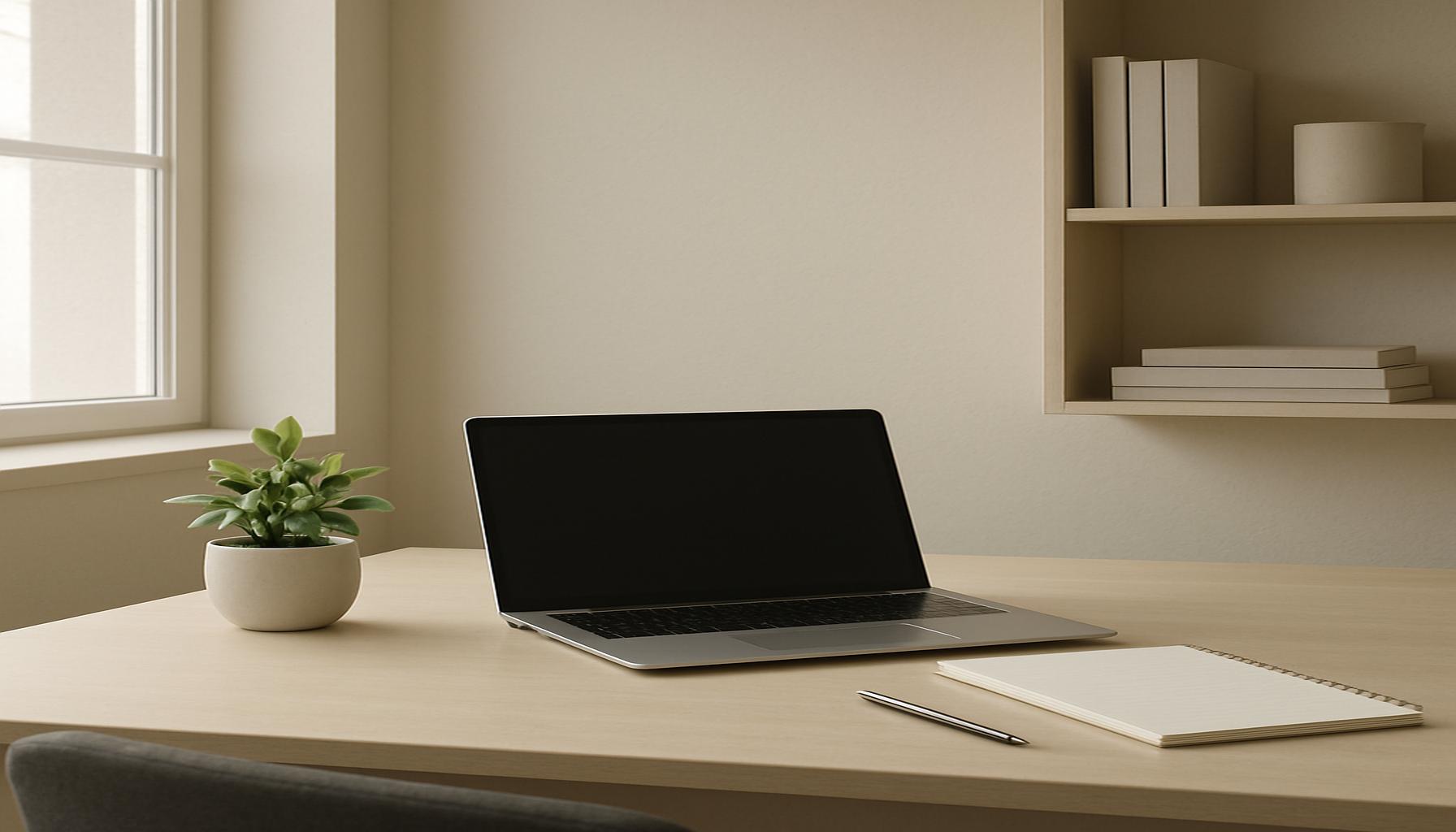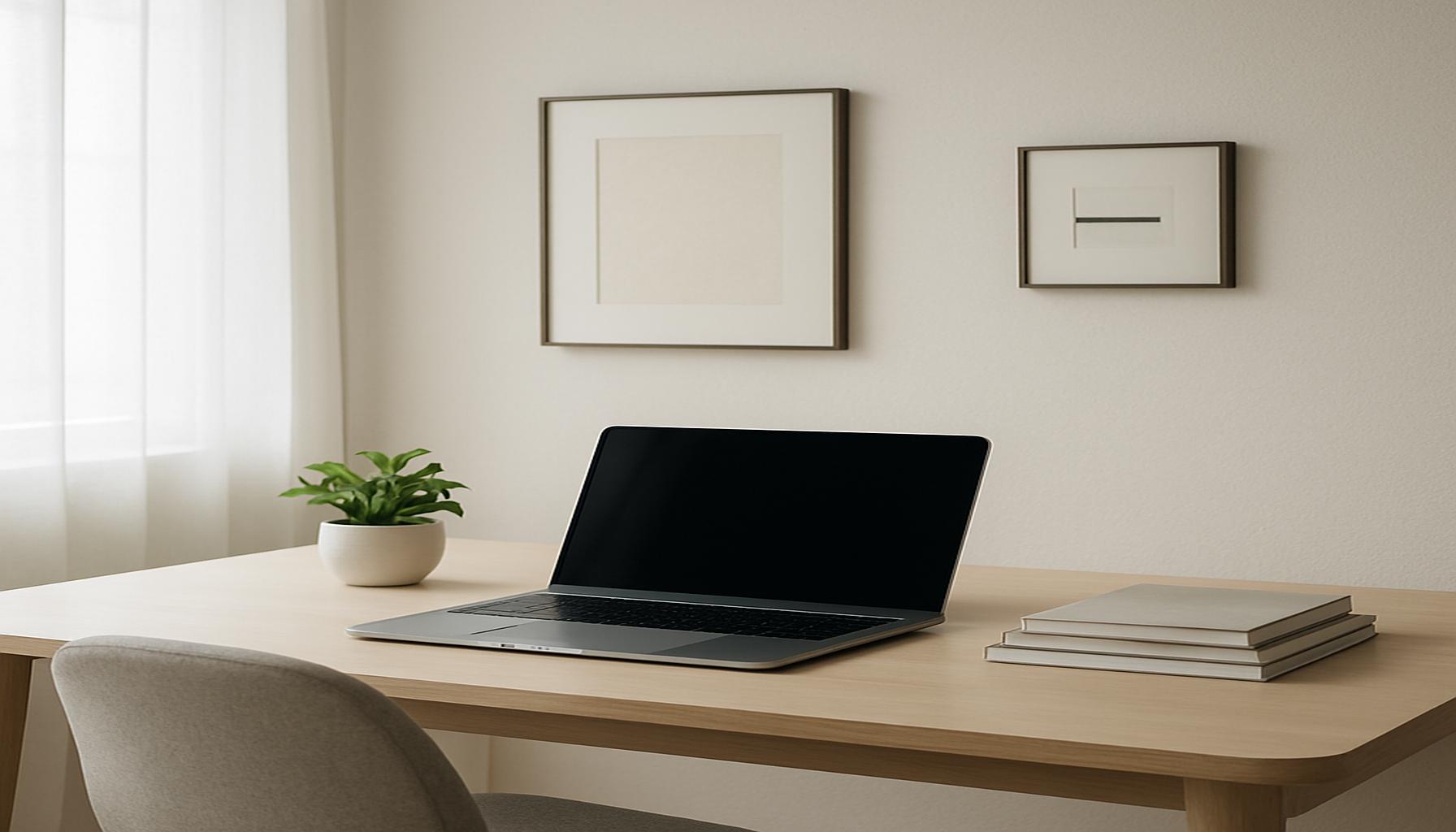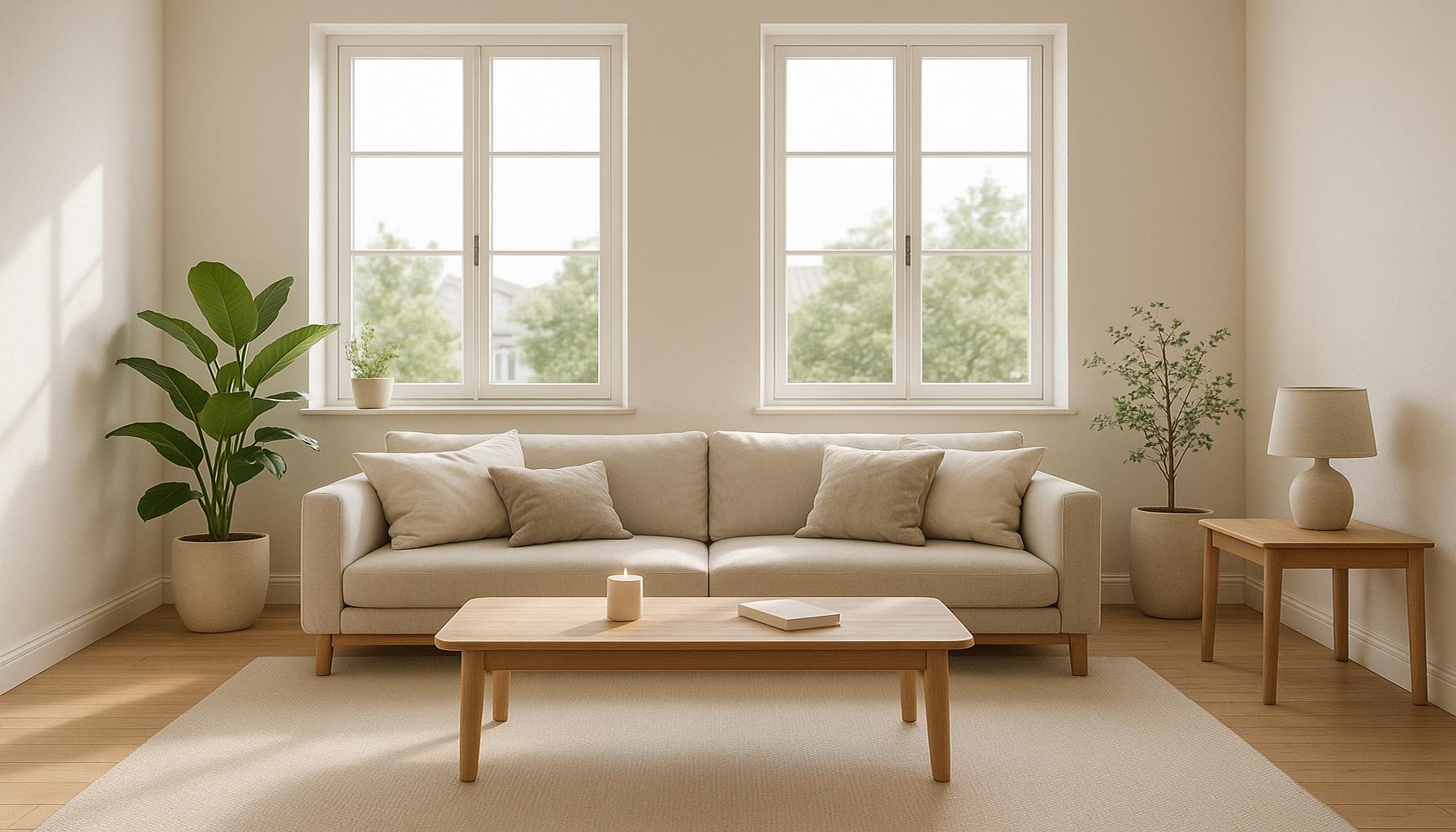Simplicity in Organization: Strategies for a Minimalist Workspace

Embracing Minimalism for Enhanced Productivity
In today’s fast-paced world, a cluttered workspace can lead to distractions and decreased productivity. By adopting a minimalist approach to your workspace, you create an environment that not only fosters clear thinking but also encourages creativity. Minimalism shifts the focus from excess to purpose, allowing you to optimize your environment to enhance your work output.
Benefits of a Minimalist Workspace
- Reduced Stress: A clean and orderly workspace can have a calming effect on the mind. Studies suggest that visual clutter can stimulate distractive thoughts, while a serene environment can promote relaxation and serve as a mental reset. For instance, by simply organizing your desk, you may find that the anxiety associated with searching for important documents diminishes.
- Improved Focus: Fewer items on your desk mean fewer distractions, which enhances your ability to concentrate. This is particularly significant in roles that require deep work or intense focus, such as writing or programming. A meticulously arranged workspace minimizes the likelihood of losing your train of thought due to visual interruptions.
- Increased Efficiency: When your workspace is streamlined, finding tools and documents becomes quicker and easier. For example, by digitizing your files and organizing them using cloud storage solutions, you eliminate the need to sift through stacks of paper, thereby saving time and increasing productivity.
Minimalism is not merely about reducing physical items; it is a philosophy that encourages making room for what truly matters in your professional life. By implementing specific strategies for organization, you can transform your workspace into a hub of creativity and productivity. Understanding what you genuinely need to excel in your work is the cornerstone of this process.
Key Strategies for a Minimalist Workspace
- Limit personal items on your desk: Select a few cherished items to foster inspiration without overwhelming your space. A single framed photo or a small plant can enhance your environment without detracting from your focus.
- Utilize digital tools to reduce paper clutter: Programs like Evernote or Google Drive allow you to store and retrieve information efficiently, minimizing the need for physical paperwork.
- Organize systems that promote ease of access and usability: Create designated spaces for essential tools and documents, so you can locate what you need swiftly. Consider drawer organizers or desktop trays that keep your most-used items within reach, yet neatly tucked away.
As you delve deeper into these principles, you’ll uncover actionable insights to refine your workspace. Prepare to discover how simplicity can lead to a more organized desk and, consequently, a more efficient and satisfying work life. When you eliminate the unnecessary, you ultimately enhance your capacity to embrace creativity, focus, and productivity. Explore further into the minimalist movement and consider how small changes in your working environment can lead to significant improvements in your overall work experience.
DISCOVER MORE: Click here to dive deeper
Strategically Streamlining Your Workspace
Adopting a minimalist workspace starts with understanding the primary elements that contribute to a simplified environment. The essence of minimalism lies in intentionality; it’s about carefully selecting what deserves a place in your work area. This fundamental practice not only helps in decluttering your physical space but also initiates a mental decluttering process that facilitates productivity.
Assessing Your Current Workspace
Before embarking on your journey toward a more minimalist workspace, it’s essential to evaluate your current setup. Take a moment to assess the items around you, asking yourself critical questions about what is necessary for your daily tasks. This initial assessment allows you to identify redundant items and those that no longer serve a purpose. Common culprits include outdated documents, old technology, and an overabundance of stationery. By developing a habit of evaluating your workspace regularly, you pave the way to a more organized and efficient environment.
- Document Oversight: Go through your files and categorize them into what you need now, what to archive, and what can be discarded. Embrace a digital-first mindset to reduce physical paperwork.
- Technology Audit: Check that your technology works for you. Eliminate unused devices and apps that clutter your digital workspace, enhancing both your efficiency and focus.
- Stationery Streamlining: Limit your writing tools to the essentials. Keep only those that you regularly use, which can free up desk space and improve organization.
Establishing a Purposeful Layout
Once you have identified and eliminated unnecessary items from your workspace, it’s time to consider the layout. The arrangement of your tools and materials plays a significant role in fostering a minimalist environment. Organizing your desk with intention can streamline your workflow, making it easier to accomplish tasks without hurdles. For example, placing a monitor at eye level prevents strain while encouraging better posture, while keeping frequently used items within arm’s reach minimizes time spent searching for them.
Another key aspect is to leverage vertical space. Installing shelves or pegboards can declutter your desk surface while providing designated spaces for essential items. This approach not only maximizes functionality but also adds an element of aesthetic simplicity that can enhance your overall workspace experience.
Creating a Routine for Dissolution
In addition to assessing and arranging your workspace, developing a routine for maintaining its minimalist state can further promote productivity. Schedule times for decluttering and organization, ensuring regular upkeep. For instance, taking five minutes at the end of each day to tidy your desk and remove any unnecessary items can keep clutter at bay and allow for a fresh start the following day.
The journey towards a simplified workspace is not merely a one-time event but an ongoing process that requires diligence and mindfulness. Understanding how to strategically streamline your workspace can lead to enhanced creativity and productivity, which is crucial in today’s competitive professional landscape. By fostering a minimalist approach, you unlock the potential for a workspace that not only optimizes your capabilities but also creates a soothing environment conducive to focus and innovation.
| Category | Key Features |
|---|---|
| Desk Organization Tips | Utilizing trays, boxes, and dividers to reduce clutter and enhance accessibility. |
| Digital Decluttering | Organizing files and emails into easily navigate folders to promote efficiency and reduce digital chaos. |
| Mindful Material Selection | Choosing quality over quantity ensures a refined workspace that enhances focus and reduces distractions. |
Creating a minimalist workspace leads to heightened productivity and clarity. By incorporating simple yet effective strategies, individuals can navigate their tasks more seamlessly. Desk organization, for instance, not only fosters an orderly environment but also invites creativity. Utilizing trays, boxes, and dividers curates a streamlined space, crucial for enhancing concentration levels.Moreover, digital decluttering represents another essential aspect. Organizing files and emails into structured folders transforms chaotic screens into organized systems, further supporting efficient workflow management. Keeping a clean digital workspace mirrors the discipline found in physical arrangements.Last but not least, mindful material selection can redefine how tools are perceived. Opting for quality items suggests focus and intention, providing individuals with the essentials they require to thrive in a minimalistic setting. These adjustments offer substantial benefits towards achieving a harmonious, minimalist workspace.
DISCOVER MORE: Click here to learn how minimalism can transform your life
Enhancing Workflow Through Minimalism
Embracing a minimalist workspace is not just about eliminating clutter; it’s also about enhancing workflow and fostering an environment that empowers efficiency and creativity. By finding balance through design and functionality, you can transform your work environment into a hub of inspiration and focus.
Incorporating Multi-Functional Furniture
The furniture you choose can significantly influence your workspace’s simplicity and functionality. Opting for multi-functional furniture allows you to maximize your space while minimizing the number of items in your area. For example, a desk that can adjust from sitting to standing promotes health and well-being, while shelves with adjustable compartments can store your essentials without taking up too much room. Consider a desk organizer with built-in charging ports or storage compartments to combine utility with design, ensuring your workspace remains uncluttered yet efficient.
Adopting the “Less is More” Philosophy
The “less is more” philosophy speaks volumes in a minimalist workspace. This can manifest through choosing a color palette that is simple and cohesive, such as whites, grays, and muted tones—colors known to reduce distractions and enhance focus. Utilize decorations and art that inspire creativity but don’t overwhelm the senses. A single piece of art or a plant can serve as a focal point, adding a touch of personality without contributing to chaos.
Additionally, implementing a lighting strategy that favors natural light, when possible, contributes to both the aesthetic and practical aspects of minimalism. Natural light is known to boost mood and productivity; adding sheer curtains can diffuse harsh sunlight while eliminating the need for cluttered lamp setups.
Utilizing Digital Tools for Organization
In today’s digital age, leveraging technology is pivotal to maintaining a minimalist workspace. Digital tools such as project management software or cloud storage services can drastically reduce the need for physical documents and notes. Applications like Notion, Trello, or Evernote not only help keep tasks organized but also allow for collaboration without the burden of paper trails.
Another benefit of digital tools is the ability to automate routine tasks, freeing up time for high-priority tasks that require greater focus. For instance, employing email filters can reduce inbox clutter, helping you concentrate only on critical communications. Streamlining your digital workspace is a vital part of any minimalist strategy, ensuring that both your physical and electronic environments enhance productivity.
Establishing Boundaries for a Peaceful Workspace
A minimalist workspace isn’t solely about physical arrangement; it’s equally about establishing borders that help maintain focus. Creating rules for your workspace can help limit distractions and maintain order. This might include designating specific times for checking emails or social media, which minimizes interruptions during peak work periods. Alternatively, consider implementing a “no phone” rule during certain hours to further concentrate on tasks at hand.
Establishing clear boundaries isn’t just beneficial for focus; it also contributes to a healthier work-life balance. The act of clearly defining when work begins and ends in your minimalist workspace can help cultivate a mindset that prioritizes both productivity and rest.
DISCOVER MORE: Click here to find out how to achieve freedom through minimalism
Conclusion: Embracing Minimalism for Enhanced Productivity
In the quest for a more efficient workspace, the principles of simplicity in organization are invaluable. By adopting a minimalist approach, you are not merely decluttering your environment but redefining how you interact with your work. From the strategic incorporation of multi-functional furniture to the thoughtful embrace of the “less is more” philosophy, each aspect contributes to fostering a space that promotes concentration and creativity. As we have explored, curating a serene workspace often leads to heightened productivity and improved well-being.
Utilizing digital tools significantly reduces physical clutter and facilitates seamless collaboration. By automating routine tasks and utilizing cloud storage, the transitions between work tasks become smoother and more organized. This digital decluttering, alongside establishing firm boundaries for your workspace, allows for a focused mindset—essential in today’s fast-paced world. Consider how these strategies not only enhance your workspace but also your quality of life, as a simpler environment cultivates greater mental clarity.
In conclusion, a minimalist workspace is not solely a trend but a sustainable practice for maximizing productivity. As you move forward, reflect on how each component of your workspace—the furniture, aesthetics, and digital tools—align with your personal and professional goals. By embracing simplicity in organization, you harness the power to transform your work life, leading to a more organized, efficient, and inspired self.


